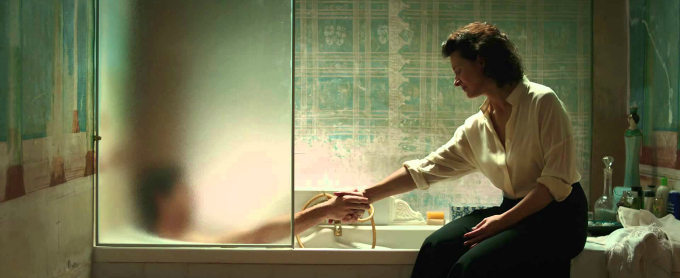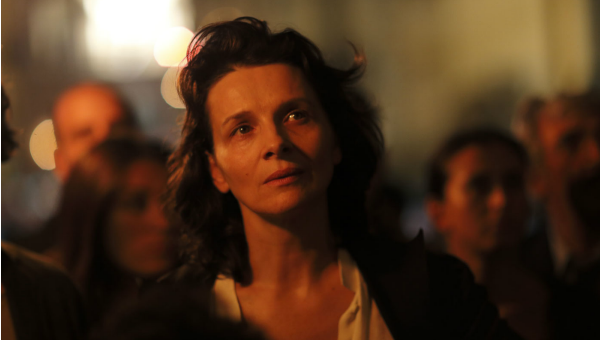 Presented at the London Film Festival in the “First Feature Film” category, THE WAIT is a delicate tale about a mother’s grief after losing her only son.
Presented at the London Film Festival in the “First Feature Film” category, THE WAIT is a delicate tale about a mother’s grief after losing her only son.
Set in a remote villa at the foot of the Etna volcano, the story focuses on Anna, a woman who recently lost her son in a car accident. Right after the devastating event, Anna gets an unexpected visit from her son’s girlfriend, Jeanne. Still in denial after the tragic loss, Anna refuses to tell Jeanne that Giuseppe is dead. In a desperate effort to create an illusion in which her son is still alive, Anna leads Jeanne to believe that he is coming back to meet her. Together they will wait for his return in the villa, but only one of them knows that he will never come back.
From the beginning, Paolo Messina doesn’t waste time, immediately setting the tone and the purpose of the movie. THE WAIT opens in the dark, and the emphasis is on one single evident detail: a crucifix. From that one single sacred object, the camera slowly brings into view the rest of the scene that is taking place during Giuseppe’s funeral. This technique comes into play throughout the film, reminding the audience that Messina is trying to fill Sorrentino’s shoes by framing small moments with his lens.
In its entirety, THE WAIT seems to navigate through a sort of surreal environment, as if the audience is experiencing the story through Anna’s mind, and her attempts to come to terms with the loss of her son Giuseppe. Everything is told through a haze. The images are blurred, and move at a slow pace: every sound is muffled and incoherent. The light is practically non-existent, and the dark slowly engulfs everything except for Anna. The panoramic shots are a reflection of her emotional state as well: the land around the villa is bare and barren. The house is empty and the only sound that the audience hears is the loud noise of Pietro, Anna’s keeper, hammering to cover up the mirrors according to a common popular and religious belief.
She does everything in her power to forget that her son will never come back…
Superstitions and local festivals are part of the scenography in THE WAIT. From the grieving women paying their respects during the funeral to the procession in the small town, religion is ever present in the film. However, since the audience sees everything through Anna or Jeanne’s eyes it all seems taken from a tale of the absurd, creating some sort of uneasiness that makes it easy to connect with Jeanne, a young French woman in a strange place waiting for her boyfriend.
Juliette Binoche gives a stellar performance in portraying Anna and her grief. Her character floats in and out of every scene, representing fully that state of disbelief and denial typical of a person who lost someone dear. She won’t accept reality. She does everything in her power to forget that her son will never come back, leaving his room untouched and in the way he left it. When Jeanne arrives at the villa she uses her ignorance as a shield to protect herself, hurting the young girl in the process. Anna’s pain is evident on Juliette’s face. She makes Anna’s grief her own, and it is so strong and powerful even in her silent tears. By holding on to Jeanne’s ignorance and naivety, Anna is trying to postpone the moment in which she will have to let go of her son.
Lou de Laâge as Jeanne supports Binoche completely throughout the film. From her unexpected arrival till her quiet departure her performance was heartfelt. Jeanne’s uneasiness and a sense of being out of place is instantly clear, even only from her voice in the messages she is leaving on Giuseppe’s voice mail. Even though both Anna and Jeanne seem to bond over their shared French nationality, the young girl perceives that there is something deeply wrong. But she can figure it all out just at the end, when Anna finally reveals that Giuseppe will never come back.
Messina’s first feature film, a loose adaptation of Pirandello’s drama “la vita che ti diedi”, analyses the dark depth of grief and it does so with the help of a brilliant cast and a cinematography that takes inspiration from Sorrentino’s work.
httpvh://youtu.be/hxPlZuCuPQI

